All about JLPT
This page offers concise information on every JLPT level, covering exam content, study methods, and key resources.
Get insights into JLPT’s purpose and structure for an effective study plan.
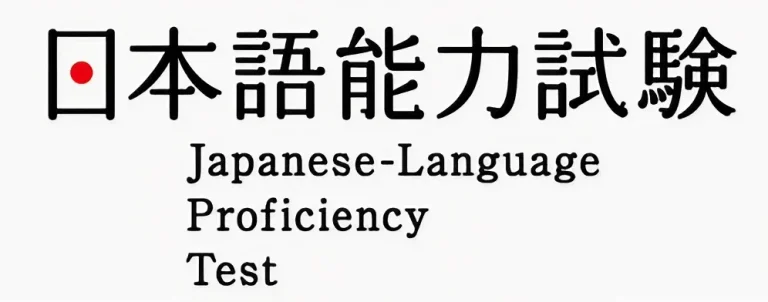
All about JLPT(Japanese Language Proficiency Test)
What is the JLPT (Japanese Language Proficiency Test)? Make good use of the JLPT to learn Japanese.
1. Exam contents
The JLPT is an abbreviation for the Japanese Language Proficiency Test, which is a test for measuring Japanese proficiency for those who do not speak Japanese as their mother tongue. The JLPT has 5 levels-N1, N2, N3, N4 and N5. The smaller the number, the higher the difficulty level.
This test comprehensively measures Japanese communication skills based on the three areas of “language knowledge,” “reading comprehension,” and “listening comprehension.” If you apply for the test and get a passing score or higher, you will be awarded a certification based on that level.
Check here for Japanese lessons by online Japanese tutors to help you pass the JLPT
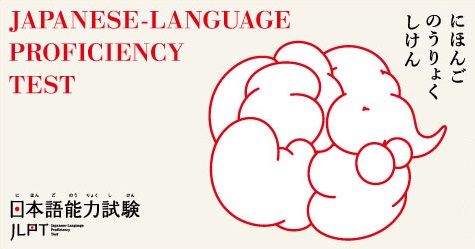
2. Date of JLPT Japanese Language Proficiency Test
It is held twice a year, in early July and December.
To apply for the upcoming JLPT exam, please click here:

3. General Description of each JLPT Level
- N5-Can understand basic Japanese to some extent.
- N4-Can understand basic Japanese.
- N3-Can understand Japanese used in everyday situations to some extent.
- N2-In addition to understanding Japanese used in everyday situations, can understand Japanese used in a wider range of situations to some extent.
- N1-Can understand Japanese used in a wide range of situations.
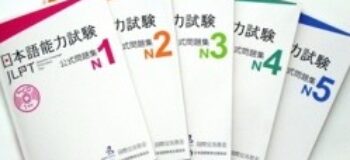
MyJLPT is a website that allows those who wish to take the Japanese Language Proficiency Test (JLPT) in Japan to apply for the test, check their test results, and apply for the issuance of certification results and certificates. Check more…
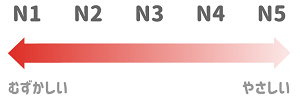
5. Advantages of Taking the JLPT
-
/* Style Definitions */
table.MsoNormalTable
{mso-style-name:標準の表;
mso-tstyle-rowband-size:0;
mso-tstyle-colband-size:0;
mso-style-noshow:yes;
mso-style-priority:99;
mso-style-parent:"";
mso-padding-alt:0mm 5.4pt 0mm 5.4pt;
mso-para-margin:0mm;
mso-para-margin-bottom:.0001pt;
mso-pagination:widow-orphan;
font-size:10.5pt;
mso-bidi-font-size:11.0pt;
font-family:"游明朝",serif;
mso-ascii-font-family:游明朝;
mso-ascii-theme-font:minor-latin;
mso-fareast-font-family:游明朝;
mso-fareast-theme-font:minor-fareast;
mso-hansi-font-family:游明朝;
mso-hansi-theme-font:minor-latin;
mso-font-kerning:1.0pt;}
- You may need it when working for a Japanese company.
- Points are awarded based on testing levels achieved to receive preferential treatment in terms of immigration control in Japan.
- Taking the JLPT is a condition for taking national examinations such as Japanese medical examinations (N1 is required)
- N2 or higher is required to be exempted from the Japanese language test.
- Exemption from some subjects on the Japanese Junior High School Graduate Certificate Examination (N2 or higher makes exempts people from the Japanese language test)
- Taking the JLPT is a condition for selecting candidates to be nurses and care workers.
- Review an overview ofJLPT N5 practice test, JLPT N4 practice test , JLPT N3 practice test, JLPT N2 practice test, JLPT N1 practice test and all about JLPT.
In addition to receiving preferential treatment when residing in Japan, there are cases where a certain level or higher is required for certain occupations.
Since the JLPT is the most widely accepted method for proving your Japanese language level, it is useful in many aspects of your life, even outside of job hunting.
Click here for Japanese lessons by Japanese tutors to prepare for passing the JLPT
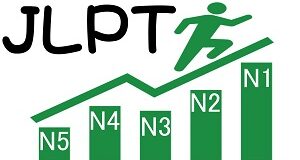
JLPT exercises
You can try the Japanese JLPT practice test of your desired level. Students taking the e-Learning course can take the N5 to N1 practice exams during the course.
- JLPT Level check. (Japanese-Language Proficiency Test)
- JLPT Practice Test N5, N4, N3, N2, N1.

Vocabulary: 25 min, Grammar: 50min, Listening: 30min
This practice test is slightly different from the actual number of exam questions and question format on the actual N5 test. Please purchase the latest practice exam questions to make sure. Source: Japanese-Language Proficiency Test Worldwide Official Website. You can check the official questions of the Japanese Language Proficiency Test.
Try the JLPT example
N5 question
きのうは うちに ( ) 何(なに)を しましたか。
1 かえる 2 かえるから 3 かえって 4 かえったり
Answer: 3
N4 question
( )しないで、どうぞ たくさん たべて ください。
1 しつれい 2 しっぱい 3 えんりょ 4 はんたい
Answer: 3
N3 question
( )寝たので、気持ちがいい。
1 すっかり 2 ぐっすり 3 はっきり 4 ぴったり
Answer: 2
N2 question
新しい商品を売るために、彼は毎日忙しく飛び( )いる。
1 かかって 2 かけて 3 まわって 4 まわして
Answer: 3
N1 question
私の主張は単なる( )ではなく、確たる証拠に基づいている。
1 模索 2 思索 3 推測 4 推移
Answer: 3
To what level could you get the correct answer?
Reference from the Japan Foundation
Other Japanese exams
- 日本留学試験
Examination for Japanese University Admission for International Students(EJU) - ビジネス日本語能力テスト
Business Japanese Proficiency Test(BJT) - 実用日本語検定
J.TEST - 日本語NAT-TEST
The Japanese Language NAT-TEST - 標準ビジネス日本語テスト
Standard Test for Business Japanese (STBJ) - 実用日本語運用能力試験
TopJ - 生活・職能日本語検定
Certificate of Japanese as a foreign language (J-Cert) - 外国人日本語能力検定
Japanese Language Capacity Test (JLCT) - 実践日本語コミュニケーション検定
Practical Japanese Communication Exam (PJC) - JPT日本語能力試験
Japanese Proficiency Test (JPT)
Japanese Tutors in the Kanto Area
- Japanese Tutors in Yokohama
- Japanese Tutors in Atsugi
- Japanese Tutors in Chiba
- Japanese Tutors in Edogawa
- Japanese Tutors in Fussa
- Japanese Tutors in Ichikawa
- Japanese Tutors in Isesaki
- Japanese Tutors in Kawagoe
- Japanese Tutors in Kawaguchi
- Japanese Tutors in Kawasaki
- Japanese Tutors in Misawa
- Japanese Tutors in Mito
- Japanese Tutors in Ota
- Japanese Tutors in Sagamihara
- Japanese Tutors in Saitama
- Japanese Tutors in Utsunomiya
- Japanese Tutors in Yokosuka
- Japanese Tutors in Nagoya
- Japanese Tutors in Anjo
- Japanese Tutors in Fukui
- Japanese Tutors in Gifu
- Japanese Tutors in Hamamatsu
- Japanese Tutors in Kanazawa
- Japanese Tutors in Kani
- Japanese Tutors in Kariya
- Japanese Tutors in Matsumoto
- Japanese Tutors in Nagano
- Japanese Tutors in Niigata
- Japanese Tutors in Okazaki
- Japanese Tutors in Toyama
- Japanese Tutors in Toyohashi
- Japanese Tutors in Toyota





